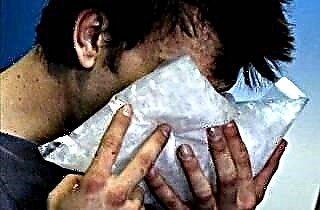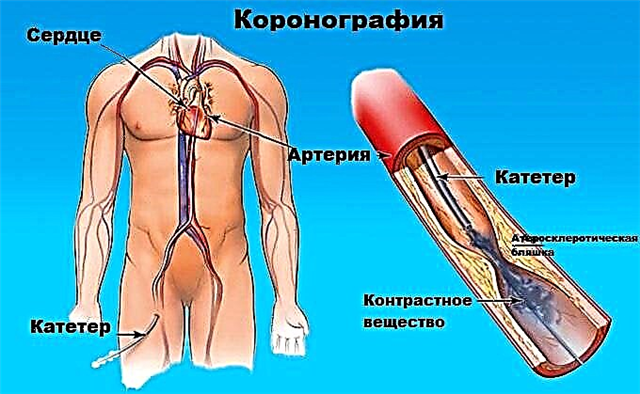This type of injury can have dangerous consequences. After all, the nose is an important organ of the respiratory system. In addition, the bones of the skull are nearby, and if severely damaged, important vessels, the lining of the brain, can be affected. Consider what constitutes a fracture of the nose, its types and possible consequences.
Which indicates a fracture
To begin with, let's define the signs that will indicate that there has been a fracture of the bones of the nose. This injury usually results in:
 strong pain;
strong pain;- bleeding;
- damage to the skin and mucous membranes;
- swelling of soft tissues;
- bruising around the eyelids;
- bruising around the nose and under the eyes;
- difficulty breathing in and out.
- possible displacement of fragments.
In addition, displacement may occur. And then visually noticeable deformation of the back of the nose (shift to the right or left), and when palpating under the fingers, one feels the bulging of individual parts.
If there is an open fracture of the nose, a tissue rupture and a wound are formed, through which the entire damaged bone or individual fragments are visible. Often there is a separation of bones along the so-called suture, since it is in this zone that they are the least strong and are not able to withstand mechanical stress. If the blow during which the injury is received is very strong, the bones are crushed into small pieces, and the entire nose looks flattened. Sometimes individual fragments sink into the nasal cavity, there is a "subsidence" of the nasal dorsum. This type of injury tends to bleed profusely, often resulting in shock and loss of consciousness.
You should be prepared for the infection to penetrate through the open wound, inflammation will begin, accompanied by suppuration.
It is more difficult to identify a closed fracture of the nose, especially if the injury occurred without displacement. In this case, there is virtually no deformation, and a strong edema is observed at the site of destruction, which makes it difficult to quickly determine the nature of the injury. Often, such a fracture of the nasal bones becomes noticeable only on an x-ray, but upon examination, the doctor can establish the presence or absence of some signs.
So, even in the case when there was a fracture of the nose without displacement, upon palpation, a sound similar to the creak of snow will be heard. During the examination, the degree of damage to the nasal septum is determined, whether breathing is difficult or not.
Determining the severity of injury
Of course, it is possible to objectively establish the severity of the injury after examination with the help of special equipment. However, some signs  determined during a medical examination. Severe injury is indicated by:
determined during a medical examination. Severe injury is indicated by:
- labored breathing;
- hemorrhage in the eye socket;
- liquorrhea or leakage of cerebrospinal fluid;
- dilated pupils;
- lack of reaction of the pupils to light;
- confusion / loss of consciousness;
- memory and speech disorders;
- deterioration of vision.
With a severe fracture of the nose, it is difficult to immediately notice the leakage of cerebrospinal fluid, since at first the discharge is a clear, colorless liquid. Outwardly, they remain invisible for a long time, but this only complicates the situation, since flow into the nasopharynx occurs, penetration into the subcutaneous tissue. Over time, the fluid can become infected and lead to various complications: meningitis, encephalitis, myelitis, and other inflammatory diseases.
Inflammation is indicated by a change in fluid: it becomes cloudy. Liquorrhea often becomes a sign of destruction during trauma to the ethmoid plate and dura mater.
During the examination, the doctor may notice that the victim does not understand well what they are saying, finds it difficult to write anything, explain his condition. In addition, a severe fracture of the nasal bones is accompanied by another complication: with such an injury, it is very difficult to stop bleeding, to carry out reposition.
Complications for any degree of damage
With trauma, the septum usually suffers, and therefore its curvature often occurs. This is not only a defect that is sometimes perceived by patients as minor, cosmetic. However, over time, this leads to impaired breathing on one side of the nose, to the frequent appearance of rhinitis and sinusitis. Moreover, any such disease, once it appears, does not disappear, but takes on a chronic form.
 With a direct impact, a fracture of the cartilage of the nose is common. This threatens such a complication as subcutaneous emphysema. Air accumulates in the subcutaneous tissue; under pressure, it begins to penetrate into the tissues of other areas of the body.
With a direct impact, a fracture of the cartilage of the nose is common. This threatens such a complication as subcutaneous emphysema. Air accumulates in the subcutaneous tissue; under pressure, it begins to penetrate into the tissues of other areas of the body.
A detailed examination after injury is also necessary to identify damage in areas that are distant from the nose. So, with a strong blow to the face, for example, during an accident, damage to the cervical spine occurs.
The trauma is often accompanied by a hematoma in the nasal septum. The accumulation of blood under the mucous membrane leads to another complication. There is a decrease in the lumen of the nasal passages, as a result of which nasal breathing is impaired. In this case, surgical treatment is indicated, and if the hematoma is not removed, the cartilage begins to deteriorate.
Serious complications are observed with open trauma, since infection is attached here, and an inflammatory process develops that can affect any organ and system in the skull region. Because of this, the patient's condition worsens, sometimes irreversible consequences are possible.
Other complications include inflammation of the peripheral nerves in the face and neck, loss of smell and acid-base balance, frequent migraines, and asthma suffocation.
Help and conservative treatment
In the first aid plan, a compress is used, for which it is better to take ice. It is recommended to wrap the pieces of ice in a cotton cloth or towel, and then attach them to the injury site. Keep the cold compress for 15 minutes, take a break for the same time, and then repeat the procedure. This will help relieve pain, swelling, and stop bleeding.
 The use of a cold compress is indicated not only immediately after injury, but also during the first two days after it.
The use of a cold compress is indicated not only immediately after injury, but also during the first two days after it.- You can stop bleeding with tampons and 3% hydrogen peroxide. It is also good to make gauze pads and dampen them with cold water.
- The use of analgesics is recommended to reduce pain. Here, most often, preference is given to affordable anesthetic drugs - "Analgin", "Ibuprofen", "Nurofen", "Tramadol", "Ketorol".
- A sedative (Phenazepam) is used to relieve stress and prevent shock.
- If the integrity of the skin and mucous membranes is compromised, there is a risk of infection, antibiotics are recommended. They help prevent suppuration, rejection of damaged tissue. Prescribed "Erythromycin", "Tetracycline" or "Streptomycin".
It is possible to reduce mucosal edema with the help of vasoconstrictor drops. For this purpose, "Xymelin", "Otrivin", "Dlyanos" are used. Thanks to them, nasal breathing becomes easier.
Drastic measures
When crushing and displacing fragments, reduction (reduction) is shown. It is carried out only by a specialist in an inpatient department and 3-4 days after the injury, when the edema goes away.
As one of the methods, a tamponade is used, which allows you to fix the fragments in the correct position. This is done using tampons (or special splints) moistened with an antibiotic solution. If there is a retraction of the bone, it is put in place using a blunt-pointed elevator, which is inserted into the nasal passage under the depressed bone.When the fixation is carried out without the application of splints, but only with the use of tampons soaked in paraffin. They are removed, as a rule, after a week, and applied splints after two.
 Sometimes a broken nose requires more serious repair, and this may be necessary for a fracture with small fragments. The fragments are reduced using a nasal expander and gauze swabs lubricated with vaseline oil. First, a dilator is inserted into the nasal passage, then the doctor carefully pushes its ends and then puts all the fragments in place. Without removing the dilator, gauze tampons are inserted into the nose to fix the position of the fragments.
Sometimes a broken nose requires more serious repair, and this may be necessary for a fracture with small fragments. The fragments are reduced using a nasal expander and gauze swabs lubricated with vaseline oil. First, a dilator is inserted into the nasal passage, then the doctor carefully pushes its ends and then puts all the fragments in place. Without removing the dilator, gauze tampons are inserted into the nose to fix the position of the fragments.
If the injury caused displacement and debris formation, a more complex procedure is required and it takes place in two stages. First, the fragments return to their normal position, and only after that the doctor begins to correct the displacement. In addition, in case of a fracture with the formation of small fragments, a firm fixation of the reduced fragments is required. For this, plaster or fixing rollers are used. If there is a fracture of the septum, implantation of implants is possible.
There are cases when, with a closed fracture, the victim did not immediately go to the doctor. Deformation, as well as difficulty in breathing, forces this to do so. However, if more than three weeks have passed since the injury, rapid reduction is not possible. In order to put the fragments in place, the bone must be broken again. This operation is carried out, as in other cases, with the use of anesthesia.
Recovery period
When the first shock and stress after the injury passes, the question arises, how long the damaged area heals. Since the face area is provided with a good blood supply, wound healing takes place quickly and almost without complications. Even after the provision of medical care and surgery to reposition the fragments, bruises remain on the patient's face for some time, and swelling persists. The same effects can be observed in the area of the eyes and other parts of the face. If there are no complications, these symptoms disappear after 10 days, and the overall results become noticeable after six months, but sometimes it takes 8-12 months. www.sravni.ru/kredity/srochnye-nalichnymi/
 Physiotherapeutic treatment is also indicated, in which case the type and course of procedures is selected separately for each patient. In UHF therapy, capacitor plates are placed on the surface of the face, where radiation is supplied. Such procedures give an anti-inflammatory effect, increase the body's defenses, improve nutrition and restore all damaged tissues.
Physiotherapeutic treatment is also indicated, in which case the type and course of procedures is selected separately for each patient. In UHF therapy, capacitor plates are placed on the surface of the face, where radiation is supplied. Such procedures give an anti-inflammatory effect, increase the body's defenses, improve nutrition and restore all damaged tissues.
The use of infrared rays is also practiced, and incandescent lamps are used for this type of therapy. Infrared rays reduce pain, improve blood flow in the affected area and improve general metabolism. In addition, with this type of treatment, the infection is destroyed, which is very important after open fractures.
Electrophoresis is often used, and one of its results is the activation of the regeneration of damaged tissues. The area of injury is exposed to a constant electric current, and since the procedures are carried out using drugs, it transports them through the skin to the site of injury. But it should be borne in mind that after an injury, electrodes cannot be applied to the nose, therefore they are placed in another area - the ear.
To answer the question of how long the fracture site heals, the degree of implementation of medical recommendations should also be taken into account. In particular, after an injury, you cannot sleep for some time, lying on your stomach and even on your side, therefore, until the bones are completely healed, this should be done on your back.
During the recovery period, you can also not wear glasses, go to a bathhouse, take a hot bath, or exercise with great physical exertion. For a faster recovery, it is recommended to introduce into the menu dishes based on foods rich in vitamins, calcium and other substances beneficial to bones.

 strong pain;
strong pain; The use of a cold compress is indicated not only immediately after injury, but also during the first two days after it.
The use of a cold compress is indicated not only immediately after injury, but also during the first two days after it.

